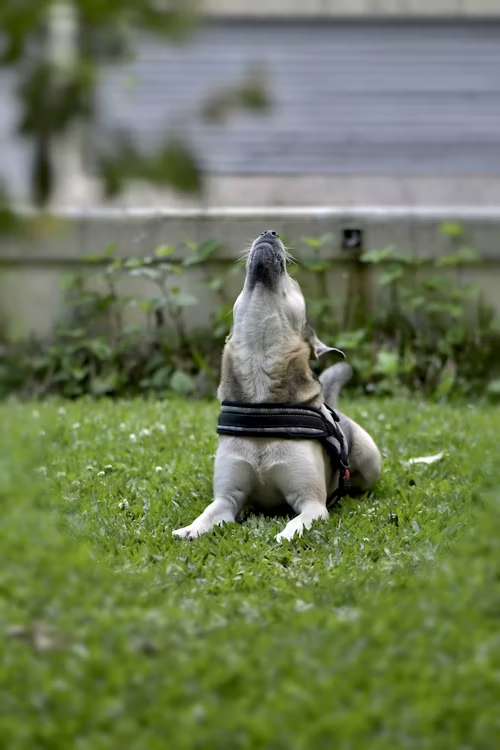When Your Dog Is Always On the Move, Something’s Off
Does your dog constantly pace around the house, whine for attention, or seem unable to relax — even after a walk? You’re not alone.
This kind of restless behavior at home is one of the most common issues dog owners face, and it’s often misunderstood. It’s not always about needing more exercise. In many cases, it’s a sign that your dog lacks structure, clarity, or the skills to decompress.
In this post, you’ll learn why dogs struggle to settle, what that behavior really means, and how to create a calm, balanced dog through simple daily changes.
What Restless Behavior Looks Like
-
Pacing from room to room
-
Whining or barking when not being engaged
-
Following you constantly
-
Standing instead of lying down
-
Reacting to every small sound or movement
-
Struggling to rest even after physical activity
These behaviors may not seem serious at first, but they often lead to bigger problems like separation anxiety, leash reactivity, or destructive habits if left unaddressed.
What Causes This Lack of Calm?
1. No Mental Off-Switch
Many dogs never learn how to relax because they’re always in “go” mode. Without structured downtime, they assume they should be active 24/7.
2. Too Much Freedom, Too Soon
When a dog has full access to the house without boundaries or supervision, they often create their own rules and routines — including nonstop movement.
3. Overstimulation Without Structure
More walks, more toys, more play doesn’t always help. In fact, it can increase energy and anxiety if there’s no built-in time for rest and decompression.
4. Accidental Reinforcement
If whining or pacing gets your attention — even negative attention — your dog may learn that being restless is how they interact with you.
How to Help Your Dog Learn to Settle
1. Introduce “Place” Training
Teaching your dog to go to a designated mat or cot and stay there builds impulse control and relaxation. It gives your dog a defined job — be still and calm — and rewards that behavior.
Start with short durations and increase over time. Reward calmness and quiet presence.
2. Use the Crate as a Reset Tool
Crates aren’t just for bedtime. They’re a powerful way to teach your dog to rest during the day. A structured nap in the crate helps reduce overstimulation and creates a sense of security.
Crate time also eliminates the opportunity to rehearse pacing or demand-based behavior.
3. Limit Freedom in the House
Use baby gates, leashes indoors, or closed doors to restrict roaming. Give access only when your dog is calm and respectful. This builds better behavior and teaches that freedom is earned.
4. Train Short, Focused Sessions Daily
Structured training sessions (5–10 minutes) give your dog mental engagement and guidance. Obedience drills like sit, down, and recall help shift your dog’s focus from chaos to clarity.
5. Reward Calmness Throughout the Day
Catch your dog being good. If they lie down quietly or choose to go to their crate, offer a calm “good” or a small treat. Reinforce the behavior you want more of.
What to Avoid
-
Constantly following your dog around
-
Allowing non-stop access to the entire home
-
Letting your dog set the tone with barking or pacing
-
Confusing affection with leadership during high-energy moments
-
Assuming more exercise is always the solution
Why Physical Exercise Alone Doesn’t Fix It
Walks and play are important, but they don’t teach your dog how to be still. In fact, overexercising without structure can lead to a more restless mind.
Balance physical movement with structured rest, crate time, and calm handling. That’s where the change happens.
Final Thoughts: Calmness Is a Skill, Not a Personality Trait
A dog who paces or whines isn’t defiant — they’re unstructured. They need help learning how to settle, self-soothe, and follow your lead.
By shifting from chaos to routine, rewarding relaxation, and creating clear expectations, you can transform your home into a peaceful place where your dog can truly rest.
Unlock your dog’s potential with professional training in St. Louis!
Off Leash K9 Training in St. Louis is your trusted partner for developing a well-behaved, obedient dog, ready for off-leash adventures. We tackle issues from house manners to advanced obedience with tailored, effective methods. See the incredible transformation possible for your canine companion. Contact us at (314) 441-3935!


